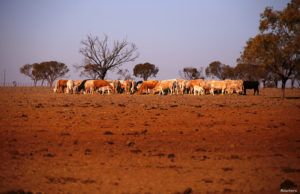We as ADREF start by defining the meaning of the word Disaster
A disaster is a serious problem occurring over a short or long period of time that causes widespread human, material, economic or environmental loss which exceeds the ability of the affected community or society to cope using its own resources. Disasters are routinely divided into either “natural disasters” caused by natural hazards or “human-instigated disasters” caused from anthropogenic hazards. However in modern times, the divide between natural, man-made and man-accelerated disasters is quite difficult to draw.
DISASTER MANAGEMENT.
Refers to the conservation of lives and property during natural or human-made disasters. Disaster management plans, by protecting from disease and droughts. Disaster management can be of either natural disasters or man-made disasters.
DISASTER RISK MANAGEMENT
Disaster risk reduction is a broad term that includes anything we do to prevent or reduce the damage caused by natural hazards like earthquakes, floods, droughts, and storms. Investments in disaster risk reduction save lives, not just after the disaster occurs, but even as disaster strikes, Disaster risk reduction (DRR) sometimes called disaster risk management (DRM) is a systematic approach to identifying, assessing and reducing the risks of disaster. It aims to reduce socio-economic vulnerabilities to disaster as well as dealing with the environmental and other hazards that trigger them. The most commonly cited definition of Disaster risk reduction is one used by UN agencies such as (UNDDR) and the (UNDP): “The conceptual framework of elements considered with the possibilities to minimize vulnerabilities and disaster risks throughout a society, to avoid (prevention) or to limit (mitigation and preparedness) the adverse impacts of hazards, within the broad context of SDG.
DISASTER CYCLE
- Mitigation – Minimizing the effects of disaster.
Examples: building codes and zoning; vulnerability analyses; public education. - Preparedness – Planning how to respond.
Examples: preparedness plans; emergency exercises/training; warning systems. - Response – Efforts to minimize the hazards created by a disaster.
Examples: search and rescue; emergency relief . - Recovery – Returning the community to normal.
Examples: temporary housing; grants; medical care
DROUGHT AND FOOD SECURITY

A drought is an event of prolonged shortages in the water supply, whether atmospheric (below-average precipitation, surface water or ground water. A drought can last for months or years, or may be declared after as few as 15 days. It can have a substantial impact on the ecosystem and agriculture of the affected region and cause harm to the local economy . Annual dry seasons in the tropics significantly increase the chances of a drought developing and subsequent wildfire. Periods of heat can significantly worsen drought conditions by hastening evaporation of water vapour.
Drought is a recurring feature of the climate in most parts of the world. However, these regular droughts have become more extreme and more unpredictable due to climate change. In fact studies based on dendrochronology, or tree rings dating, confirm that drought affected by climate change goes back to 1900. One can divide the effects of droughts and water shortages into three groups: environmental, economic and social.
FOOD SECURITY
Food security is the measure of an individual’s ability to access food that is nutritious and sufficient in quantity. Some definitions of food security specify that food must also meet an individual’s food preferences and dietary needs for active and healthy lifestyles.

